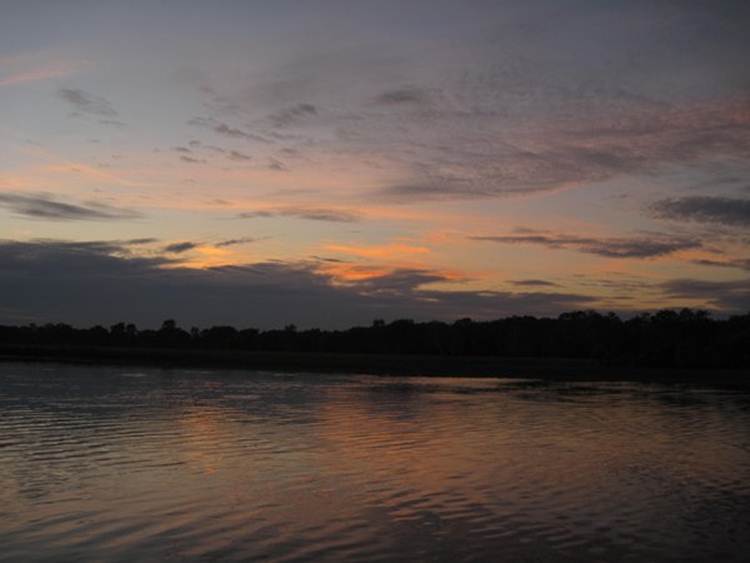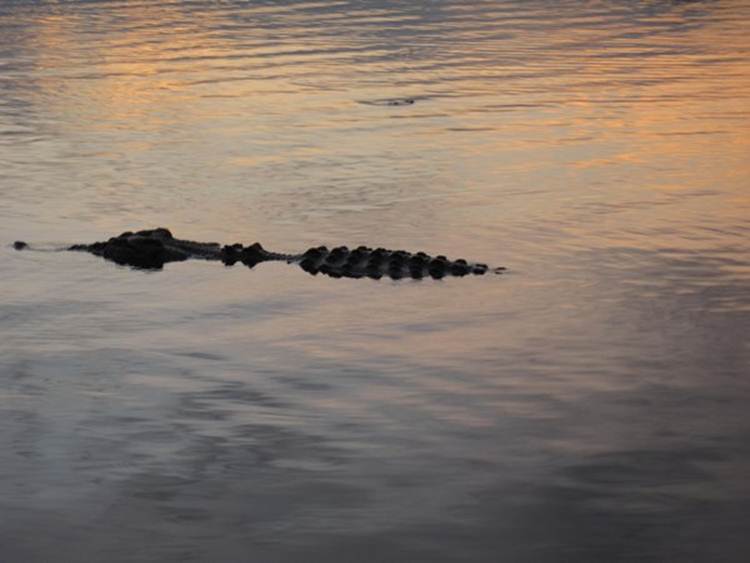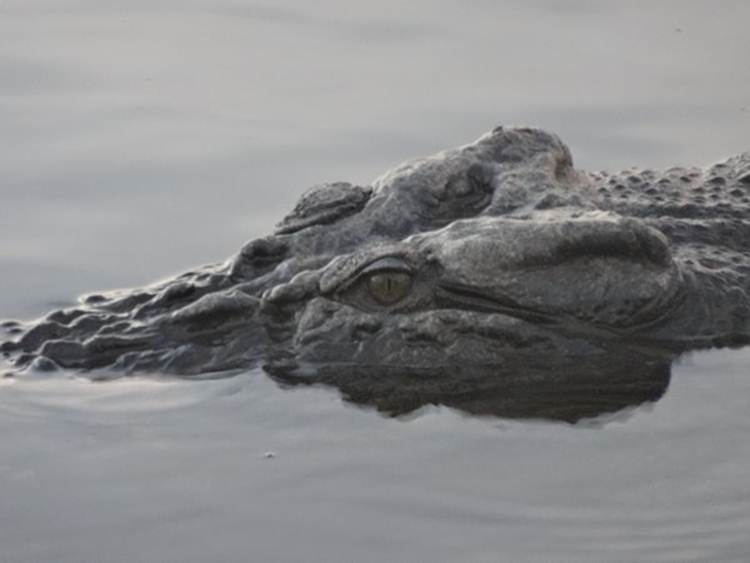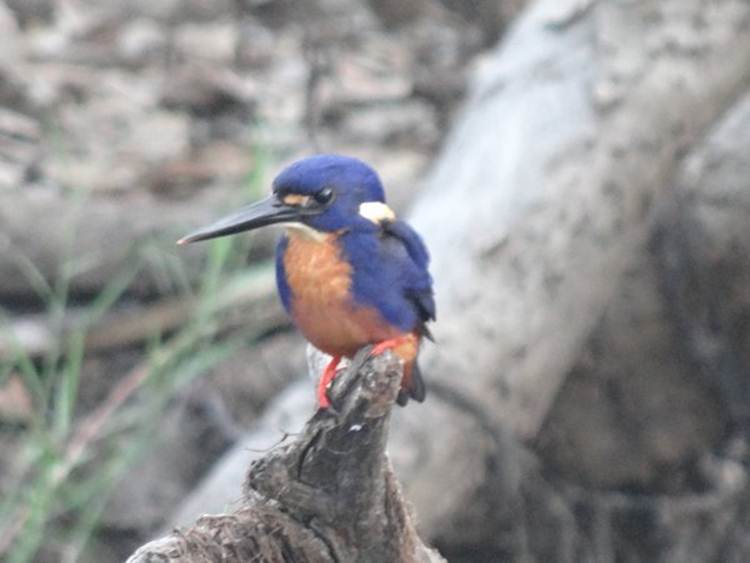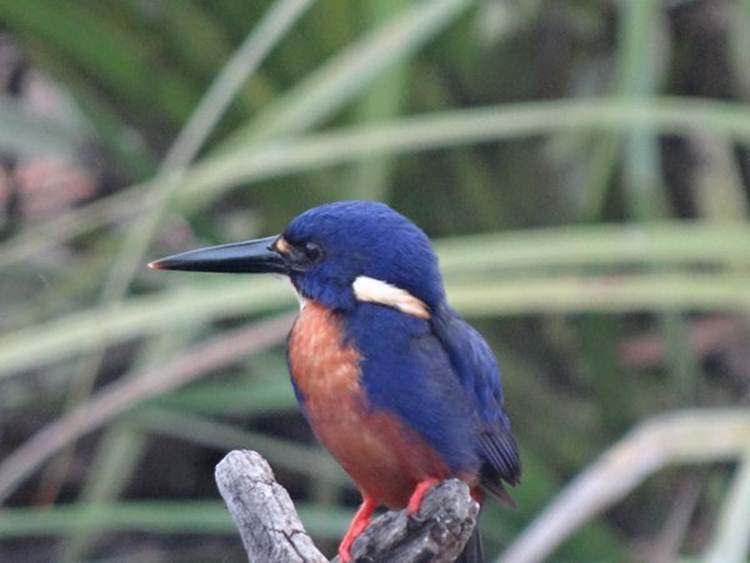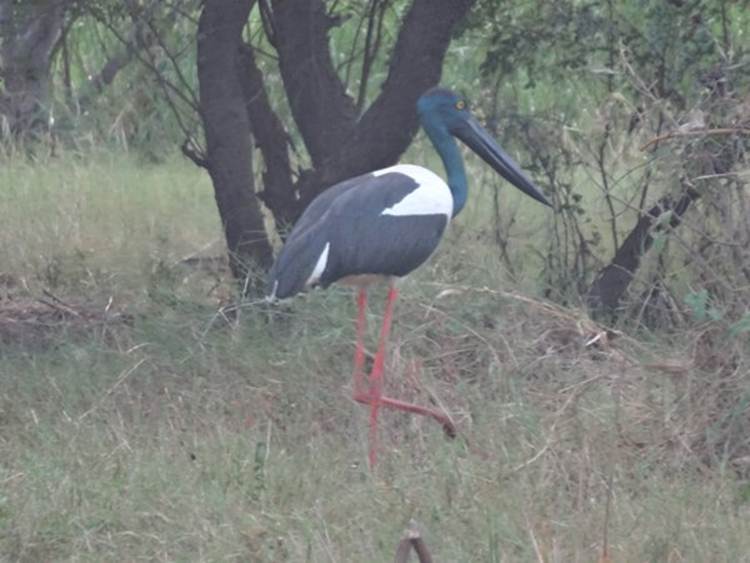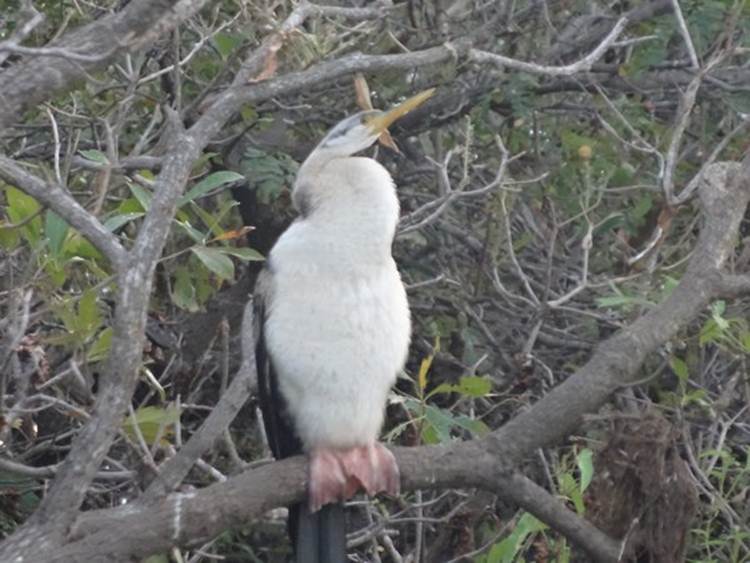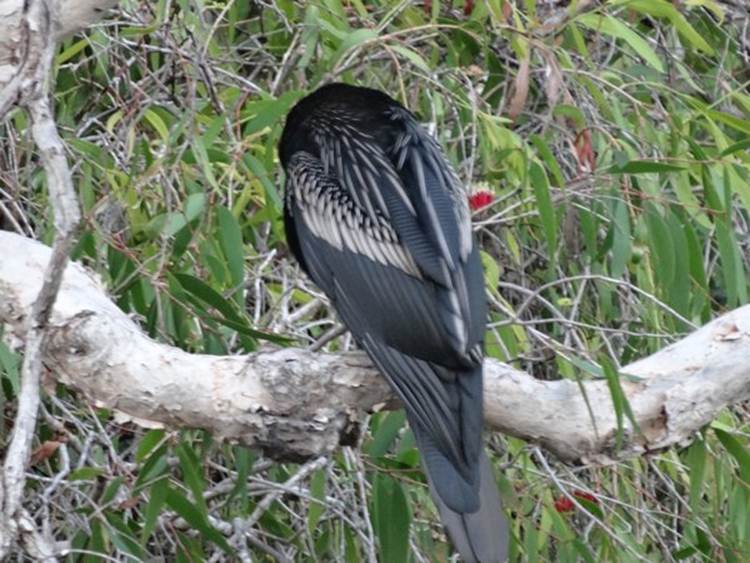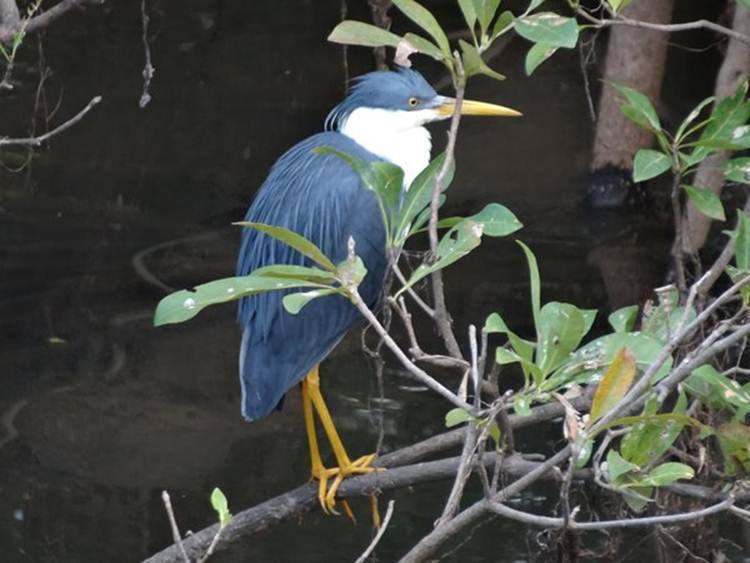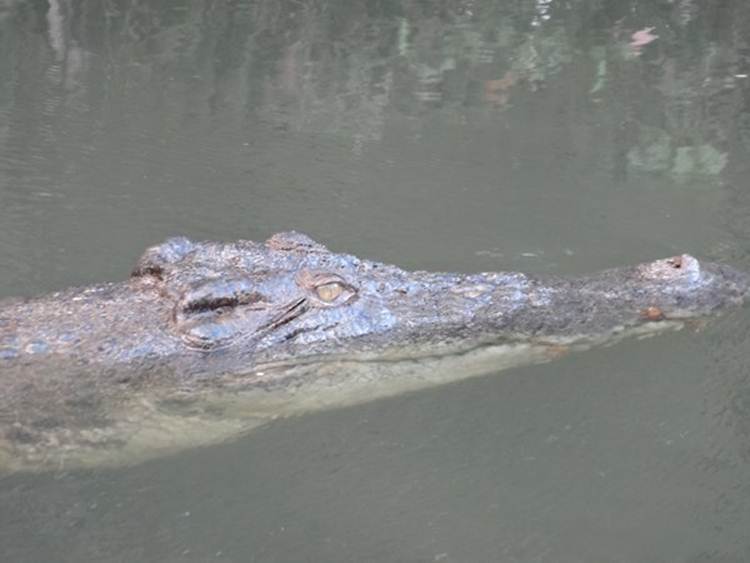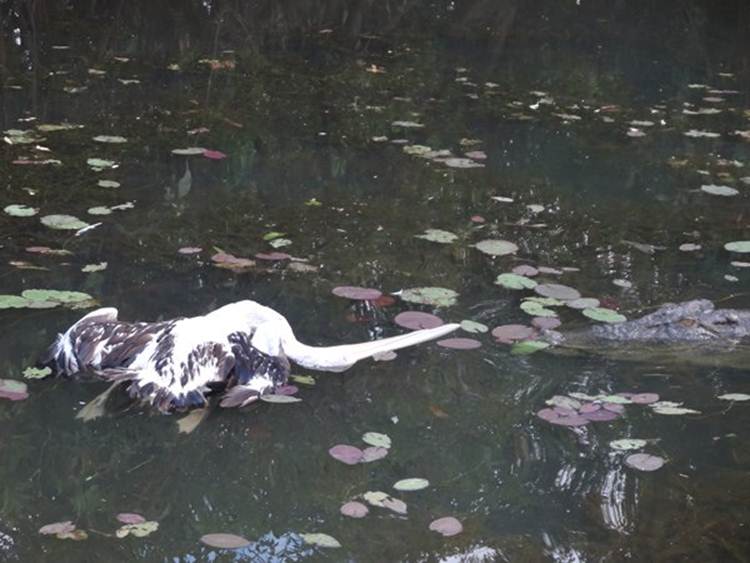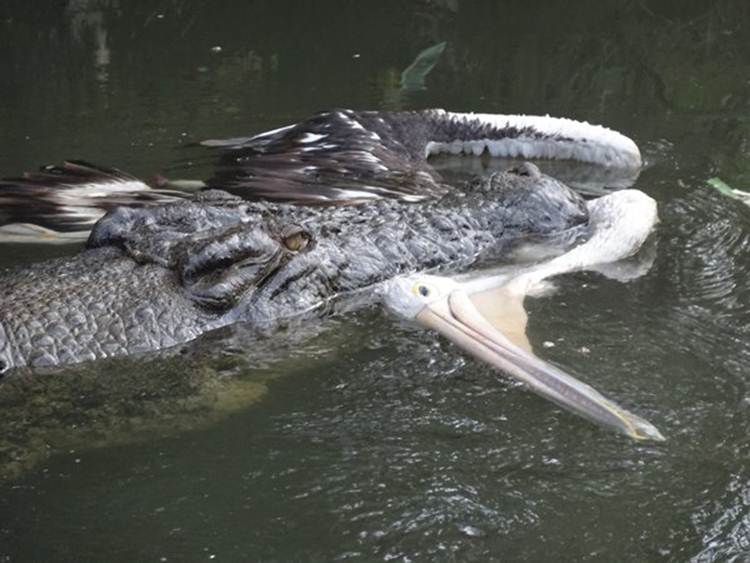Kakadu - Early morning cruise 1

Booked ourselves in for early morning cruise at Yellow river billabong which feeds into South Alligator river. A misnomer since there are two types of crocodiles here, freshwater (Crocodylus johnstoni) and saline or estuarine (Crocodylus porosus), but no alligators. There are three ‘alligator’ rivers in Kakadu, the East, South and West. All named by the coastal explorer Phillip Parker King in 1820 who assumed the crocodiles he saw were alligators. Apparently saltwater crocodiles grow much larger than alligators – I didn’t know that. Anyway, one of the other cruise boats all loaded up and ready to go.
We had a lady called Margaret as our guide and she did surely know her stuff and could spot a bird from a mile off. Nice dawn shot from Paul
Magaret had just made a great speal about how might not see any crocodiles as usually hauled out somewhere this time of the day, trying to warm up, when…
They tell you not to work with animals or children. Just look at that mean head. . Crocodiles have a nictating membrane so spooky when they use it. Like turtles, nest temperature determines sex. Apparently males can grow up to 7m. According to Margaret if you guestimate the length of the snout from tip to back of head and multiply it by 7 you get the rough length of the crocodile. What you don’t really appreciate is how much of the animal is under the water. This guy is about 5m long but you can’t see the tail, which they gently swish to move. There are no ripples, nothing, talk about stealth.
The azure kingfisher (Alcedo azurea), beautiful orange breast and underbelly and upper part deep royal blue to azure colour – hence the name. Stands stock still and unless you notice quick flash of colour really hard to see.
Big bill for such a little bird.
Not a really good shot but this is the only Jabiru (Ephippiorhynchus asiaticus) or the black-necked stork, we have seen so far. Massive bill, the head and neck feathers are supposed to be iridescent but this guy was in the dawn light.
The darter (Anhinga melanogaster). Neck all scrunched up here like a snake, beautiful black and white feathers on back but you can’t really see that here. Look at its bill though, straight and like a dagger. This is the female as the male has a chestnut brown breast and belly.
Another darter but from the back this time, see what I men about the feathers.
This is the pied heron (Ardea picata). This one is breeding, got long black plumes on its head and dark blue grey plumes down its back. These disappear during non-breeding season. It should also have long white plumes round the base of its neck hanging down over its belly – lucky thing .
This is a salty. We had spotted a dead pelican floating in the water earlier on and Margaret spotted this crocodile and thought it had spotted the pelican.
Turned boat around and slowly followed the crocodile.
Engine off as the crocodile approached the pelican.
Gave it a bit of a nudge and sat there for a while.
We all thought it wasn’t interested and then wham bam it grabbed hold of it. Was really amazingly fast, no wonder they say no hands and don’t lean over the boat. Paul managed to get it on film and we post on U-Tube when we find decent internet coverage.
Then it slinked off with the pelican in tow. How did the penguin die? Could be cane toads, invading the area and produce a poison from glands in their neck. Some fauna are learning not to touch. Could be old age, disease, who knows.
|

